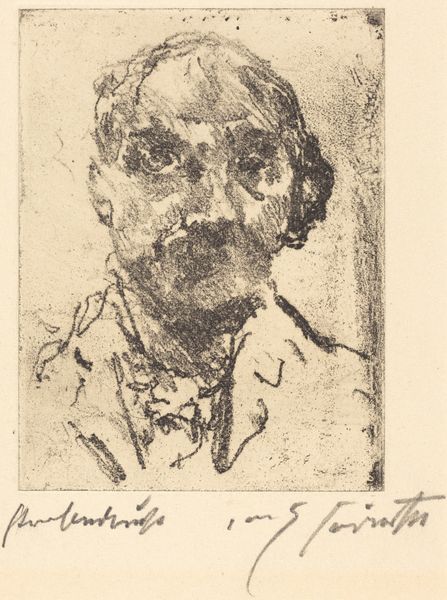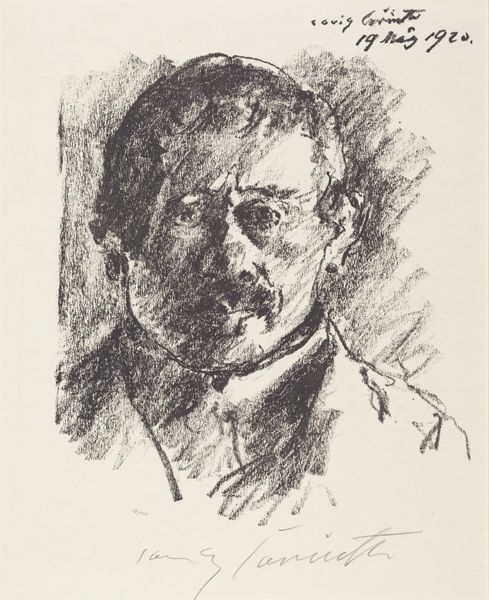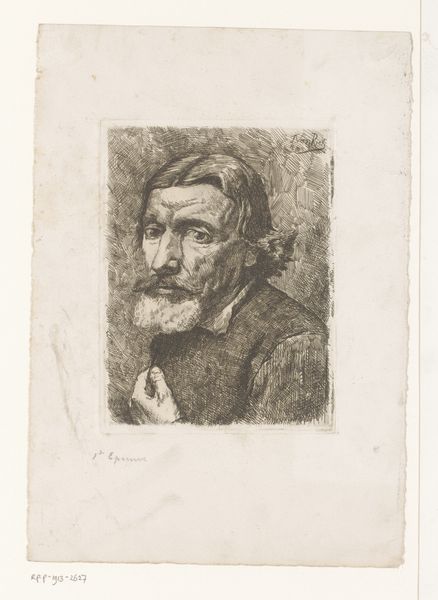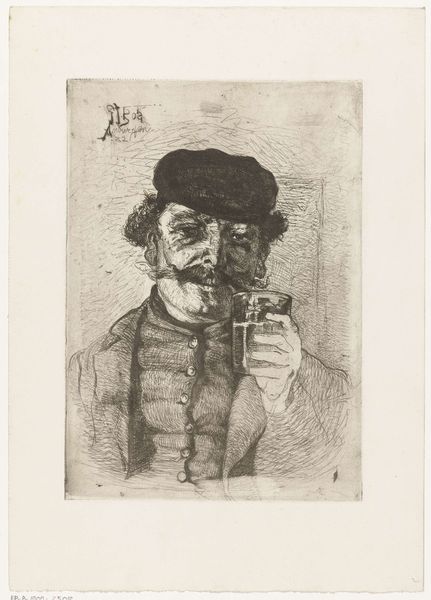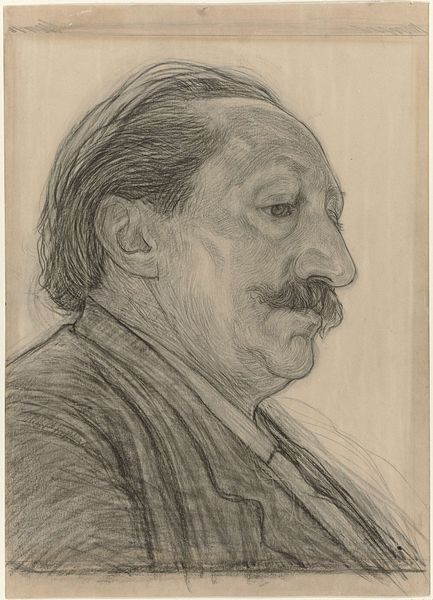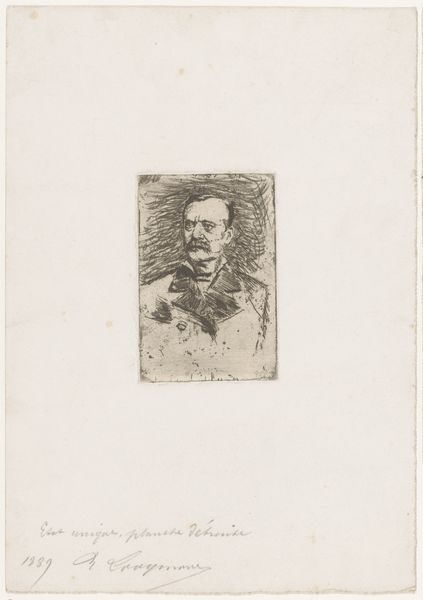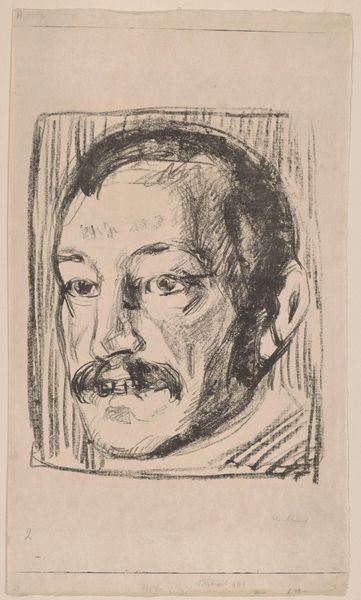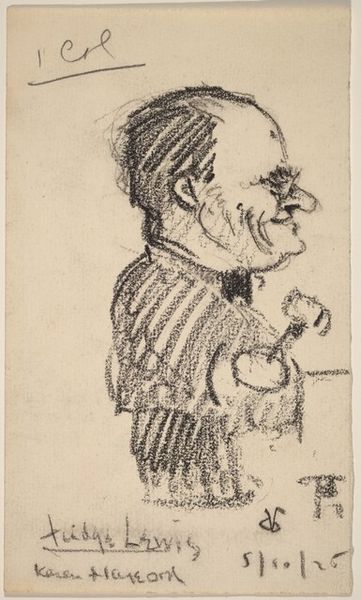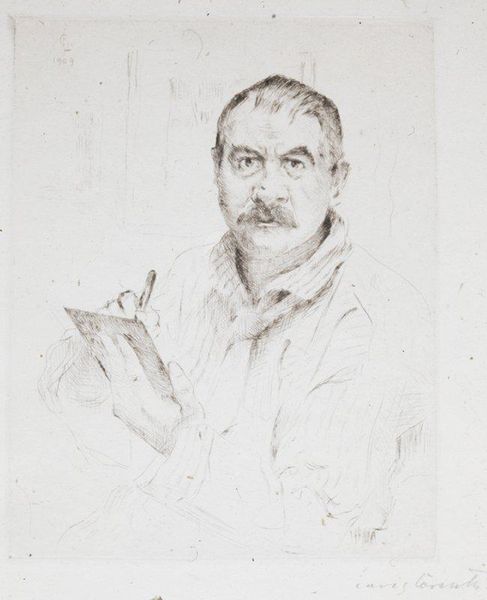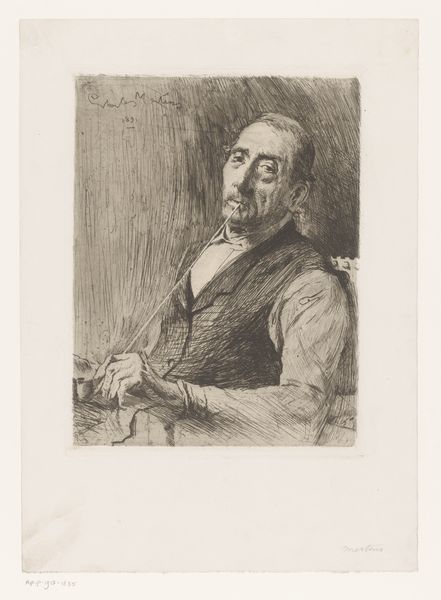
drawing, paper, ink
#
portrait
#
drawing
#
ink drawing
#
self-portrait
#
paper
#
ink
#
expressionism
Dimensions: 27 3/8 x 23 1/4 in. (69.53 x 59.06 cm) (image)39 3/8 × 31 3/8 × 7/8 in. (100.01 × 79.69 × 2.22 cm) (outer frame)
Copyright: No Copyright - United States
Curator: There’s a raw honesty that hits you immediately, right? Looking at Lovis Corinth's "Self Portrait" from 1908, a frenetic ink drawing now residing at the Minneapolis Institute of Art. Editor: Definitely. The scratchy lines and intense gaze—it feels like confronting something unfiltered, almost a dare to look away. Curator: Exactly! The expressionist influence is so clear. It’s less about capturing a likeness and more about laying bare the inner turmoil, the artist’s soul screaming from the paper. He even holds a clutch of what seems to be paint brushes as though they are weapons, tightly clutched against his chest. Editor: I read that tension not just as personal angst, but reflecting the broader social and political upheaval of the time. 1908—think of the anxieties swirling around industrialization, the burgeoning modernist movements, the brewing storm before World War I. To represent oneself in this way, as agitated and defiant, that’s a statement. Curator: True, and I’m thinking about how self-portraits are always performative to some extent. There is an intention for being viewed a particular way. Here, the loose confident strokes give an almost careless depiction to the work. Yet that piercing stare is unflinching. What to believe? Editor: Well, isn’t that the beauty of Expressionism? It foregrounds the subjective experience, prioritizing emotional truth over objective reality. This self-portrait almost feels like an invitation to engage with the complex, often contradictory nature of identity itself, in a time where identity itself was in great tension, if you understand that notion... Curator: Completely! The work feels unfinished, the artist captured mid-thought, or perhaps mid-crisis. It's an ongoing conversation. Editor: Yes! As if the gaze itself breaks that fourth wall, asking, “What do *you* see?” Curator: Leaving us to reckon with what we bring to it, what *we* project onto this representation of Lovis Corinth. Thank you. Editor: Precisely. Thank you.
Comments
minneapolisinstituteofart over 1 year ago
⋮
An intense competitor and a true believer in willful superiority, Corinth depicted himself as the epitome of the powerful, driven artist. With assuredness undergirded by decades of academic practice, he applied strokes of black ink—thinned out in varying degrees—that slash, dance, and sometimes scrub. Where he miscalculated, he made corrections, scraping the soft, textured surface of the thick cardboard. Finally, he shaded the background with broad strokes of black chalk, making his presence glow. His wide-eyed countenance, coupled with the ferocious intensity of his execution, lends a slightly crazed undertone to this Übermensch (superman), a status that would receive a serious blow when Corinth suffered a stroke three years later.
Join the conversation
Join millions of artists and users on Artera today and experience the ultimate creative platform.
